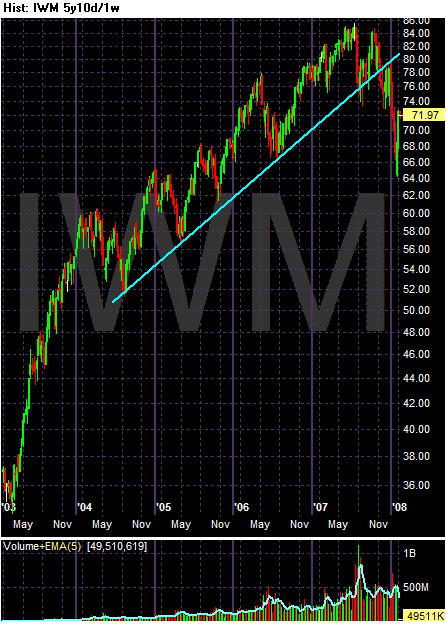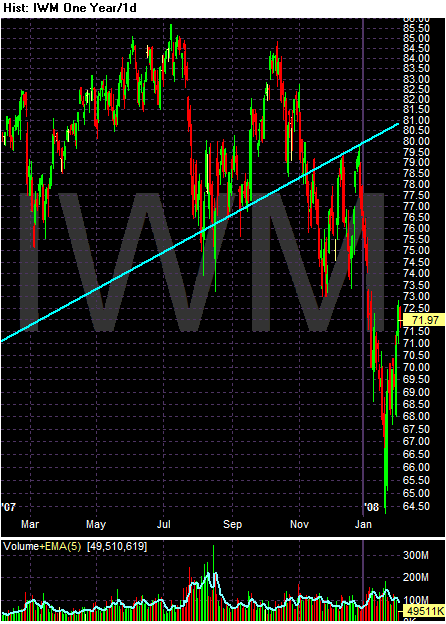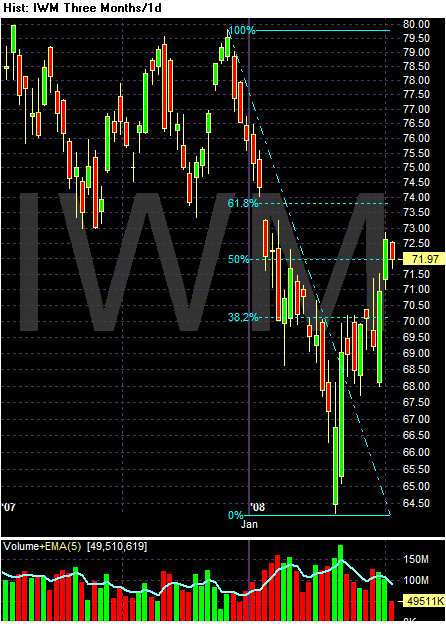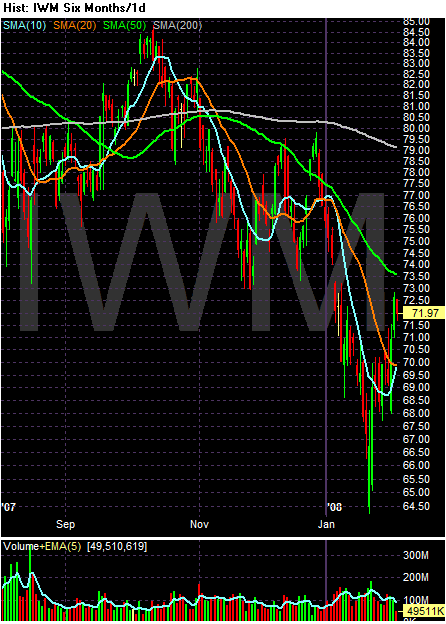I use the Russell 2000 as a proxy for risk in the market. The Russell 2000 is made up of "growth" companies -- companies who typically don't pay a dividend and therefore rely on strong earnings growth to increase their share prices. As such, these companies are far more reliant on a strong underlying economy. When traders start to worry about the economic fundamentals, these shares will probably get dumped first.

The above chart is what really caught my attention when I started to think we were moving into a bear market. Notice the index broke a clear three and a half year uptrend at the end of last year. Remember -- the longer the trend, the more important its break.

Here's a closer look at the trend break. Also notice the index tried to rally through the previous support level twice last year only to fall back.

Just like the SPYs and the QQQQs, notice the IWMs have a clear down, up, down, up pattern, additionally making lower lows and lower highs -- a classic bear market formation.

Assuming the market is in the above mentioned pattern, here are the Fibonacci levels for a possible rebound.

The moving average picture isn't pretty. Notice the following:
-- Prices are about 9% below the 200 day SMA
-- The 20, 50 and most importantly, the 200 SMA are all moving lower.
-- While the 10 day SMA has rebounded and is about to cross the 20 day SMA. This could signal a trend reveral.
-- the 20 day SMA appears to be ready to reverse as well.
So we have the following.
-- A clear long-term trend break
-- A bearish down, up down pattern with lower lows and lower highs.
-- A downward sloping 200 day SMA
-- But, a possible trend reversal with the 10 day SMA about to cross the 20 day SMA and the 20 possibly reversing as well.
However, before we start to get excited about a possible reversal, let's look at the underlying economic fundamentals.
-- employment growth is weak
-- the housing market is still a wreck
-- The Fed is panic slashing interest rates
-- The financial sector has written down at least $100 billion in loans.
In other words, the economic backdrop, well, sucks right now. That does not bode well for an area of the market that really relies on economic growth.